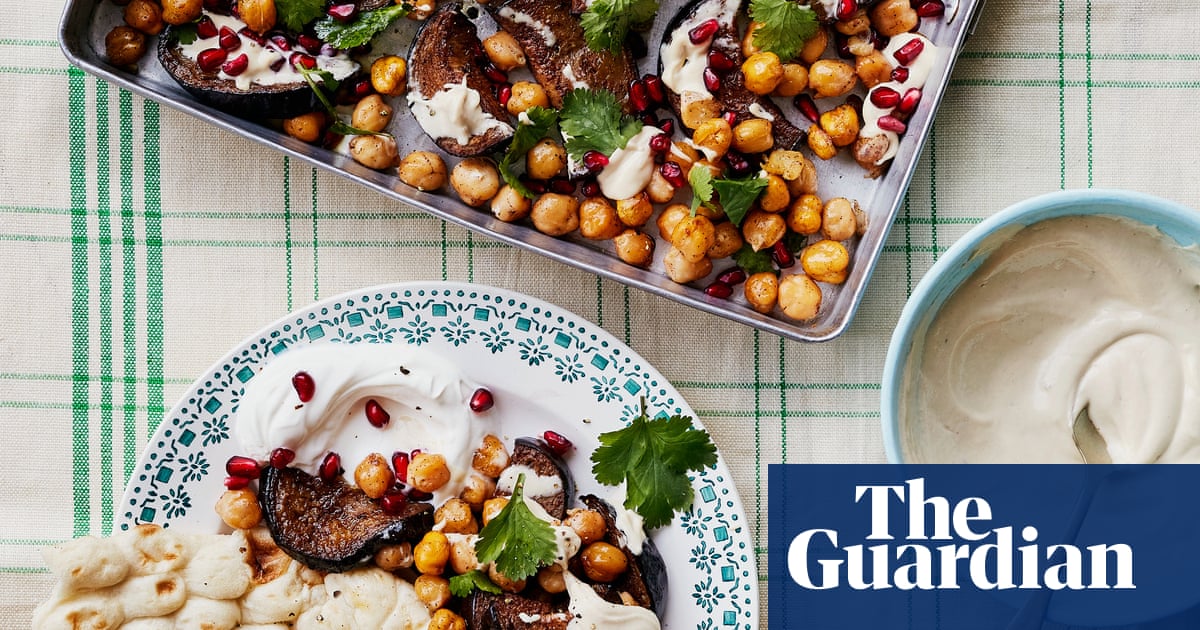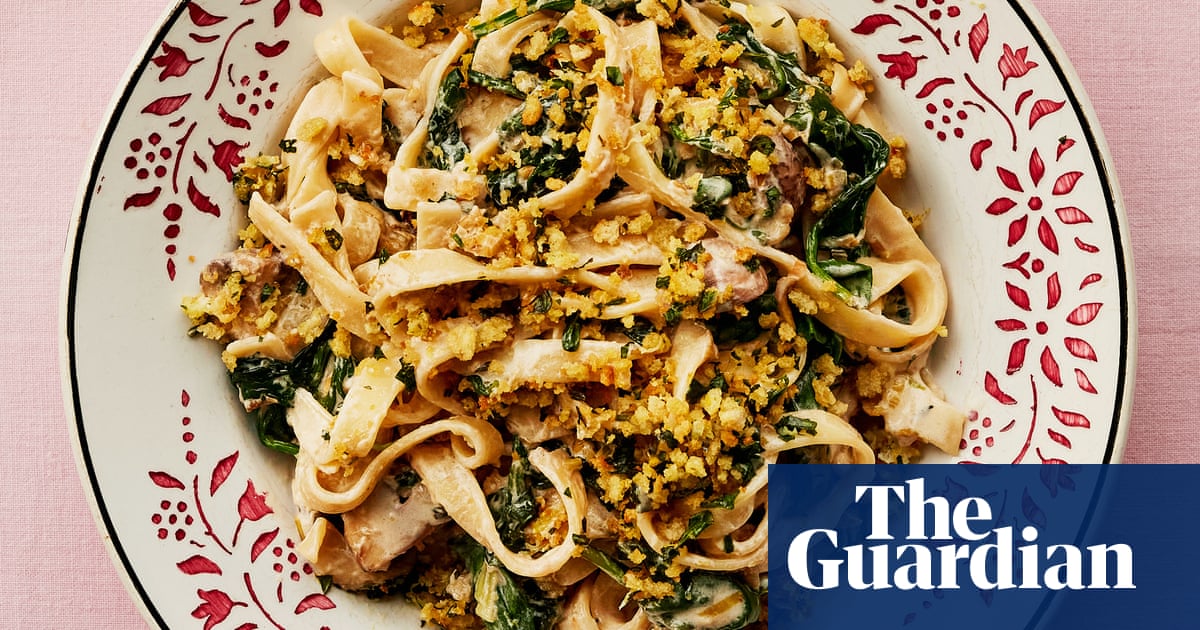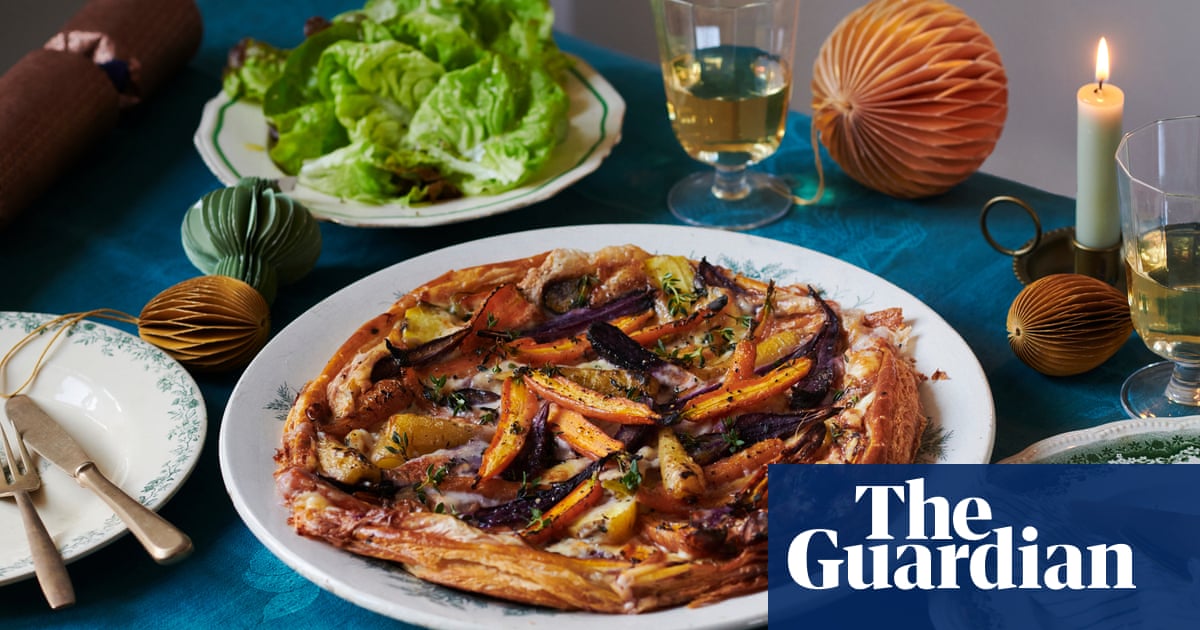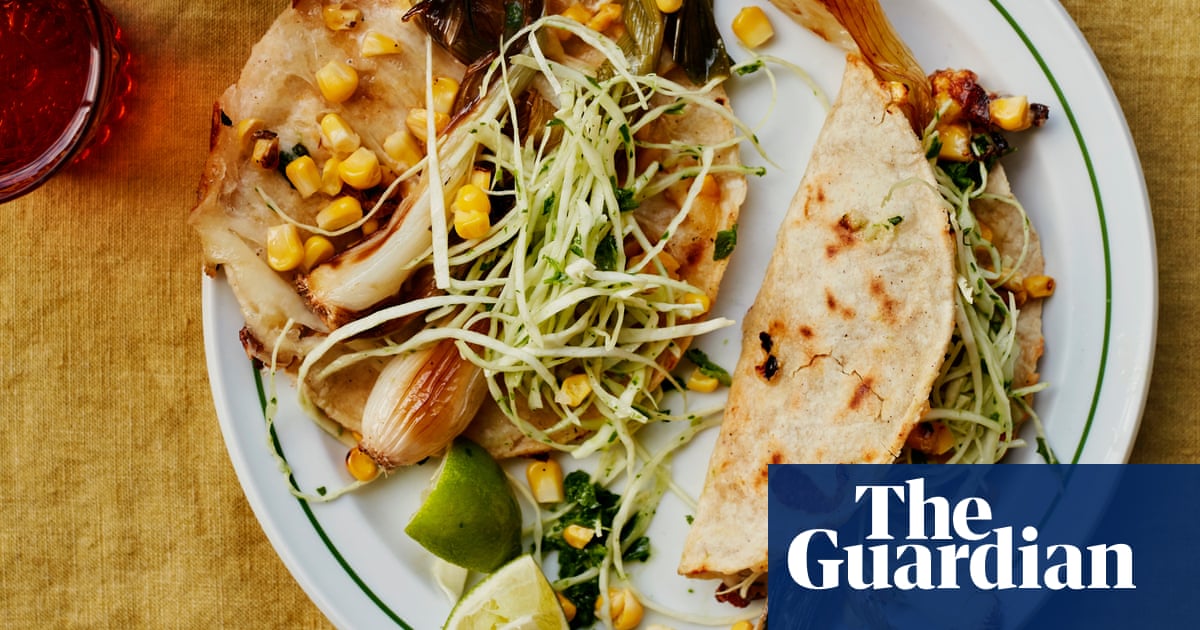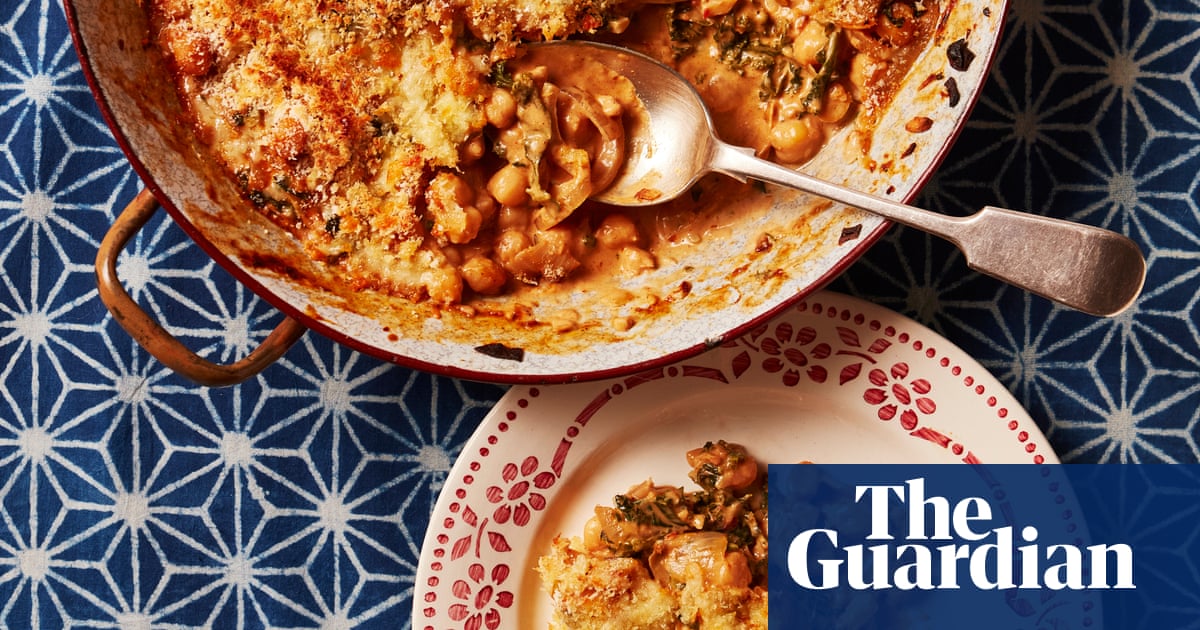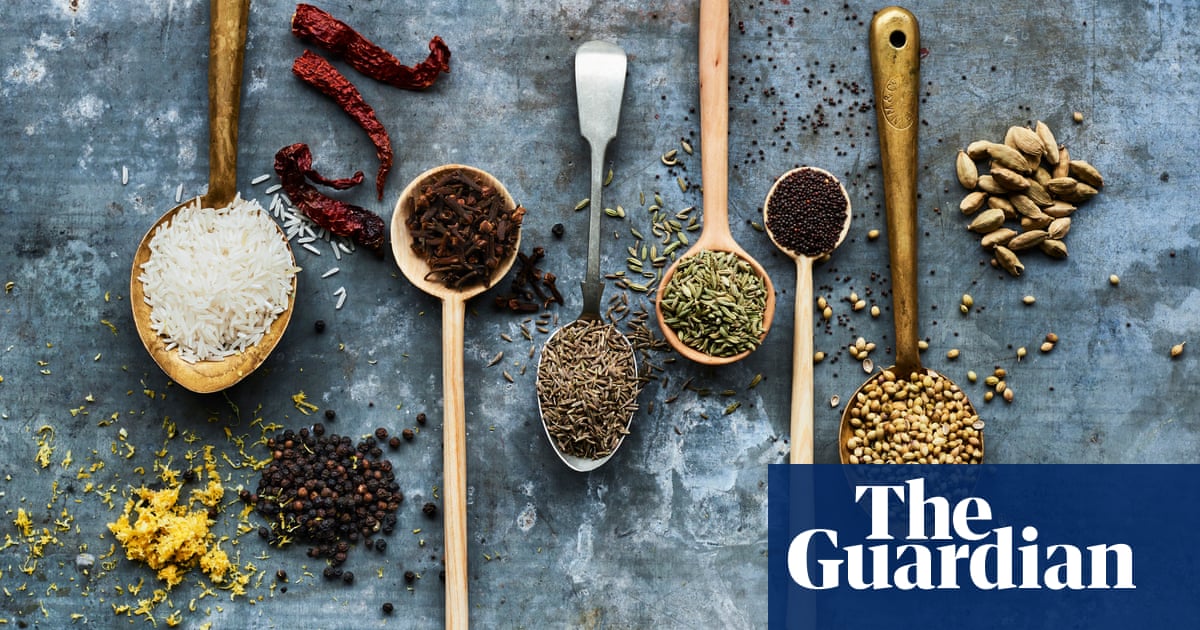
Aminimum fuss, maximum flavour dinner is the post-work holy grail, and in my new column you’ll find everything from quick-cook, quick carb dinners (less than 15 minutes, with your sauce or stir-fry cooked in the time it takes to boil pasta, noodles or rice, say) to easy dinners in half an hour (think no-fuss roasting-tin dishes or stovetop one-pots). You can also expect budget-friendly, cook once, eat twice dishes for tonight’s dinner and tomorrow’s lunchboxes. To get you started, here are my top five rules for hassle-free midweek cooking.
1 Audit your fridge (and freezer)
Quick flavour fixes include jars of harissa, fresh or jarred tubs of pesto, miso, tamarind paste, artichokes, olives and capers. If you store open packets of nuts in airtight containers in the fridge (or just seal the packet with a rubber band before stashing in the fridge door), it will improve their shelf life no end.
Frozen sweetcorn and spinach are a welcome and budget-friendly addition to frozen peas, and I’ll often make more (wholewheat) pasta than needed when cooking for my daughter, then bag, label and freeze individual portions for future emergency toddler meals (I do the same with leftover plain cooked rice for me).
Lemons and limes look lovely in a bowl on the counter, but I keep them in the fridge, where they seem to have an almost infinite shelf life. (Unlike spring onions, which are a marvellous standby, but tend to look tragic within mere minutes. I peel off the wilted bits and use them anyway.) Citrus is, of course, an instant flavour enhancer – if your pasta sauce needs something a little extra other than salt, it’s almost always improved by a judicious squeeze of lemon; lime juice will do the same for a noodle dish (see rule five below).
2 Stock your store-cupboard
Straight-to-wok noodles? Check. Several types of pasta? Check. White rice, brown rice, lentils, tinned tomatoes, tinned beans, coconut milk, a rainbow of spices, nuts, dried fruit, oils, vinegars, soy sauce and fish sauce will give you enough to make a complete meal even without nipping to the supermarket for fresh produce. And if you buy in bulk, it’s a cost-effective backbone for your everyday meals – I use 5kg or 10kg bags of brown basmati or white rice, while my mum never buys less than a 20kg bag of basmati.
Think in terms of flavour families. If you have room and budget, keep olive oil, extra-virgin olive oil, wine or apple cider vinegar and balsamic vinegar for Mediterranean dishes; and toasted sesame oil, rice vinegar, soy sauce and fish sauce for south-east Asian-inspired dishes, which will mean you have everything to hand for an almost infinite variety of recipes. But a neutral olive oil will do you for most dishes in a pinch; I use it in curries, too, rather than buying yet another bottle of oil.
Ambient fresh things to keep on the side in a bowl include ginger and garlic, so you can easily see when you’re running out of either (a nightmare), and you’ll never regret having potatoes, sweet potatoes, and red and brown onions in cloth bags or bowls in a cool, dark cupboard.
You can use flaky sea salt to finish off dishes and fine sea salt for cooking, but I tend just to buy giant tubs of Maldon and use it for everything (except salting the front path in winter, which would be excessive and which I have certainly never, ever done in an emergency).
3 Give your windowsill a makeover
It’s frankly a pain buying a whole packet of tarragon for one recipe, then watching it wilt in the salad crisper because you needed only two stems. Are three stems ever necessary? They are not, so strip the leaves (this applies to thyme and rosemary, too) and freeze in mini bags for future use, or, even better, grow your own. Living herb pots from the supermarket will thrive if you immediately repot them in larger containers. The root balls are too tightly packed for them to survive much longer than a week without repotting, but, with plenty of fresh soil and a sunny windowsill or spot by the back door, they’ll thrive; they look cheery, too.
Herbs that I have successfully repotted include basil, rosemary, sage, the aforementioned tarragon and flat-leaf parsley, though if you have a bit of outdoor space and can sow flat-leaf parsley from seed in the ground, rather than in a pot, it will shoot up into the most extraordinary, vigorous parsley carpet. (I like Gigante di Napoli from Real Seeds.) Mint will take over your garden like an army of diminutive if aromatic triffids, so always keep it contained in pots. The slugs inexplicably ate all my lemon thyme (why?!), and I have never successfully repotted living coriander or got it going from seed; please do let me know if you have had any success, and send tips.
Finally, take frequent harvests from the top parts of your herbs – this will encourage them to grow back bushily and not go leggy. (Why, yes, now you ask, I do have a monthly column in Gardener’s World Magazine, albeit on small-space harvests for absolute novices, which I am.)
4 Make a meal plan
What’s the best way to ensure you don’t end up with two aubergines, three courgettes, six types of cheese and a grapefruit in the fridge, and no idea what to make on a Wednesday night? Make a meal plan. When we first started living alone, both my sister and I made the mistake of buying enough vegetables for a large family, then wondering why everything went off. We were inadvertently replicating my mother’s shopping trolley from memory, but she was feeding four and has a mental Rolodex of meal plans (which I haven’t inherited).
Make a list of all the things you feel like eating that week (on nice stationery, if it helps), take stock of your store-cupboard top-ups and fresh ingredients, then go forth and shop. Try not to be seduced by off-plan novelty ingredients. Some meal plans are fairly prescriptive, but the beauty of having four or so days of ingredients in the house with specific recipes in mind is that if you don’t fancy kimchi fried rice on Tuesday night, you can sub Wednesday’s crisp gnocchi, because you already have everything to hand. And there’s far less food waste, which is always a good thing. (If you do end up with random leftover fresh vegetables, you could do worse than roast them with olive oil, garlic and herbs and run them through pasta.)
5 Taste it!
The number-one rule, not just for successful midweek cooking but for all cooking, is to taste your dish, season it, then taste again before serving. Use sea salt flakes and lemon juice, soy sauce, lime juice or rice vinegar where appropriate, so the dish tastes just right to you. Pasta or noodles may need an extra splash of cooking water, boiling water or a little oil to make the sauce silky, in which case you’ll need to check the seasoning again. It’s too late by the time the plate is on the table (she says bossily), and I promise that tasting and adjusting it before you serve will lift your food from ordinary to extraordinary.




